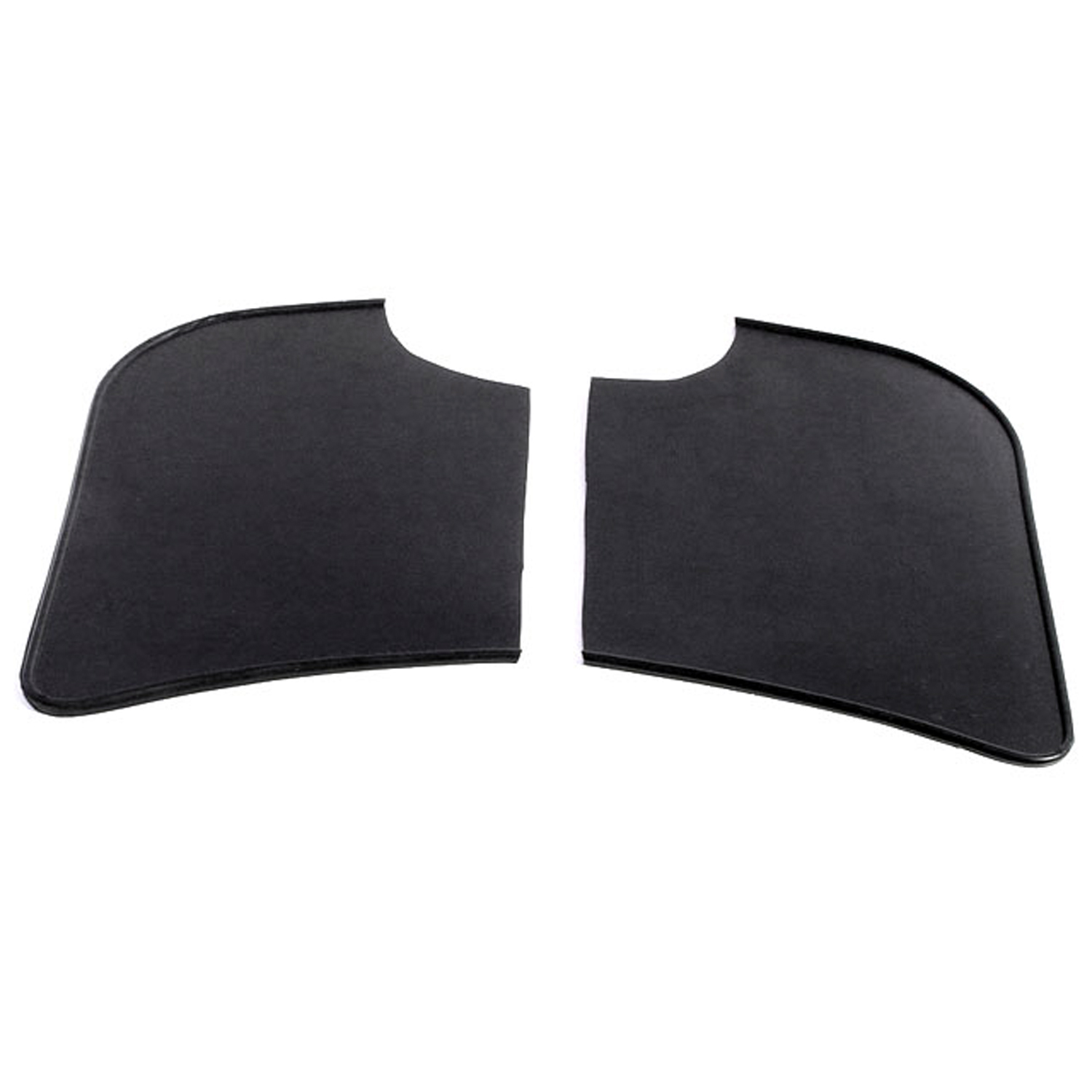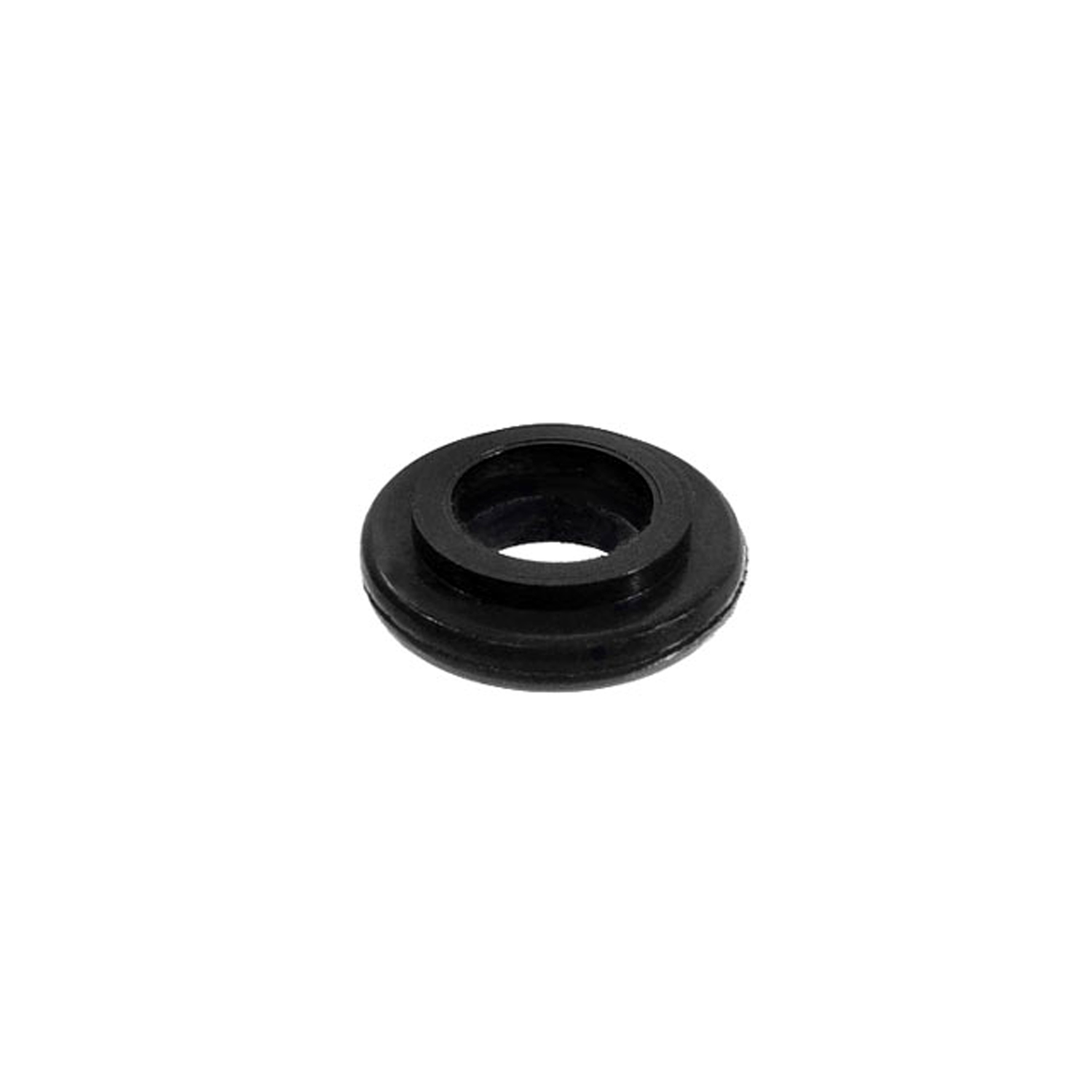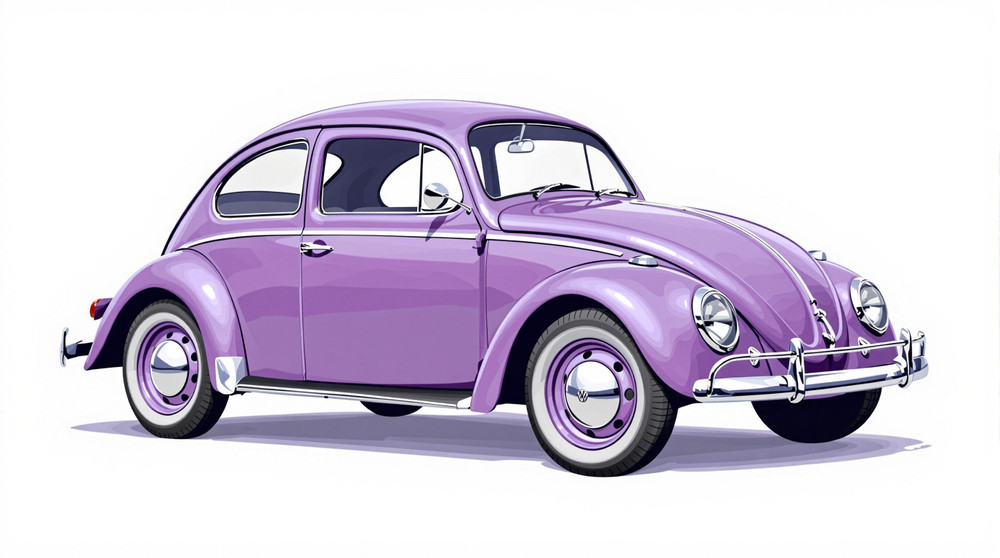Image of 1946 Volkswagen Beetle, Note: These illustrations use artistic license and may differ from actual historical models.
Performance Metrics
Fundamental Metrics
Emotional Appeal
MMP Rating
| Engine Specifications | |
|---|---|
| Engine: | Air-cooled, rear-mounted, flat four-cylinder |
| Displacement: | 1131cc |
| Horsepower: | 25 hp |
| Torque: | 49 Nm |
| Compression Ratio: | 5.8:1 |
| Ignition System: | Battery ignition system |
| Cooling System: | Air-cooled |
| Performance Specifications | |
| 0-60 Time: | Estimated over 30 seconds |
| 1/4 Mile Time: | Not available |
| Top Speed: | 62 mph |
| Transmission and Drive | |
| Drive Type: | Rear-wheel drive |
| Transmission Type: | 4-speed manual |
| Fuel and Efficiency | |
| Fuel System Type: | Carburetor |
| MPG: | 32 mpg |
| Dimensions and Brakes | |
| Brakes: | Drum brakes |
| Wheelbase: | 94.5 inches |
| Weight: | 1,600 lbs |
Note: Specifications for classic cars are given to the best of our ability, considering the limited and variant data available.
Unveiling the Icon: The 1946 Volkswagen Beetle
Stepping out of the shadows of a tumultuous era, the 1946 Volkswagen Beetle emerged as a symbol of simplicity and hope in post-war Europe. Crafted by the hands of German engineering, this unassuming vehicle was destined to become one of the most recognizable and beloved cars in history. With its distinctive rounded silhouette and air-cooled rear engine, the Beetle was not just a car but a cultural phenomenon that transcended its utilitarian roots.
Design and Innovation
The exterior of the 1946 Beetle is instantly memorable, with its curvaceous lines and friendly facade. The split rear window, affectionately known as the 'pretzel' window, is a hallmark of early models that adds to its charm. Inside, the Beetle was surprisingly roomy given its compact dimensions, with high-quality materials that belied its economy car status. The dashboard was simple yet functional, with an emphasis on ergonomics long before it became an industry buzzword.
Technologically, the Beetle was ahead of its time with features like a four-speed manual transmission and a robust electrical system. Color options were somewhat limited in the immediate post-war years due to resource constraints, but they typically included shades that ranged from pastel blues to deep greens. The most iconic body style remains the two-door sedan, which captured hearts with its blend of practicality and personality.
Historical Significance
The Volkswagen Beetle's impact on automotive design is immeasurable. It defied American trends towards larger and more ostentatious vehicles, instead championing a philosophy of simplicity and reliability. Its rear-engine layout was innovative for mass-produced cars of the time and influenced countless designs thereafter. The Beetle's enduring popularity laid the groundwork for what would become one of the most successful car manufacturers in history: Volkswagen.
Performance and Handling
Performance-wise, the 1946 Beetle wasn't about to set any land speed records with its modest top speed. However, it offered respectable acceleration for its class, with a 0-60 mph time that reflected its everyday usability rather than racing prowess. On various driving conditions, from cobblestone streets to rural roads, the Beetle handled with poise and predictability. Drivers often noted the distinctive hum of its air-cooled engine—a sound that became synonymous with the Volkswagen brand.
Ownership Experience
The Beetle was many things to many people: a daily driver for families, a workhorse for small businesses, and even a canvas for customizers and racers. Its maintenance was straightforward enough for DIY enthusiasts to tackle, while reliability remained one of its strong suits. The simplicity of its design meant that parts were generally affordable and easy to find.
Fun Facts
Did you know that some Beetles were even turned into aquatic vehicles known as 'Schwimmwagens' during wartime? Or that celebrities like John Lennon were proud owners of this modest car? While not known for breaking speed records, it did shatter expectations by becoming one of the best-selling cars worldwide.
Collector's Information
Today, early Beetles like the 1946 model are highly sought after by collectors. While production numbers were still relatively low immediately after World War II, estimates suggest thousands were produced during that year alone. Values vary widely based on condition and originality but expect well-preserved examples to fetch anywhere from $20,000 to $40,000 or more at auction. As time marches on, these Beetles have shown a steady appreciation in value among classic car enthusiasts.
Conclusion
The 1946 Volkswagen Beetle stands as more than just a car; it's an enduring legacy on wheels. Its design philosophy bucked trends and carved out a niche that has lasted through generations. Whether you're an avid collector or simply someone who appreciates automotive history, there's no denying the indelible mark left by this plucky little car from Wolfsburg.
1946 Volkswagen Beetle Catalog of Parts
 1946 Volkswagen Beetle Gravel Shields. Molded flat without metal backing plates-FS 40Gravel Shields. Molded flat without metal backing plates. Apply with contact cement. 7-5/8" long X 5-5/8" wide at top. Pair
1946 Volkswagen Beetle Gravel Shields. Molded flat without metal backing plates-FS 40Gravel Shields. Molded flat without metal backing plates. Apply with contact cement. 7-5/8" long X 5-5/8" wide at top. Pair 1946 Volkswagen Beetle Oil Cooler Seal. 7/16" I.D., 7/8" O.D. Each-RP 8-BOil Cooler Seal. 7/16" I.D., 7/8" O.D. Each
1946 Volkswagen Beetle Oil Cooler Seal. 7/16" I.D., 7/8" O.D. Each-RP 8-BOil Cooler Seal. 7/16" I.D., 7/8" O.D. EachWhy Choose Metro?
For over 100 years, Metro Moulded Parts has been the pinnacle of quality in classic car restoration parts. Our commitment to precision and authenticity in every component ensures a perfect fit and an OEM-level appearance.
- Expert Craftsmanship & Quality: Each part is a testament to our dedication to reliability and perfection, crafted from original designs and thoroughly tested.
- Advanced Technology: We use cutting-edge techniques to create flawless, long-lasting parts that surpass others in performance.
- SuperSoft Sponge – The Ultimate Door Seal: Not only are our door seals 30% softer than competitors', but they're also guaranteed to never leak. They effectively reduce wind and road noise, enhancing your classic car's comfort and driving experience.
- Proudly American: Our parts are a product of American craftsmanship, made in the USA with a spirit of excellence and heritage.
- Unrivaled Warranty: We back our products with a 30-year industry-leading warranty, a testament to our confidence in their quality.
Join us in preserving the legacy of classic cars with parts that are crafted for perfection, not just made.

